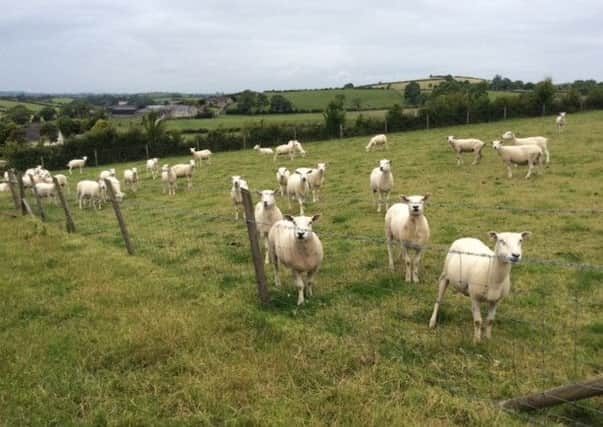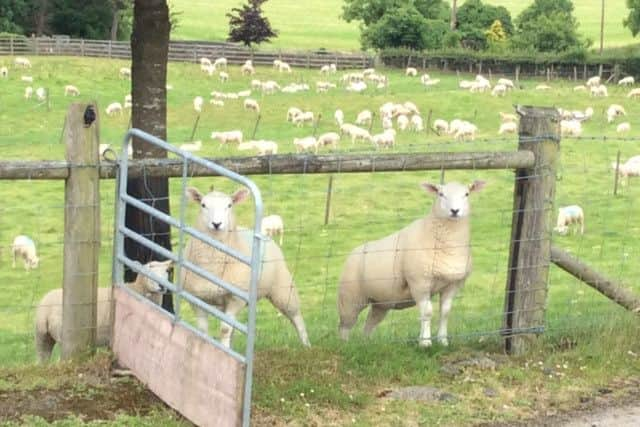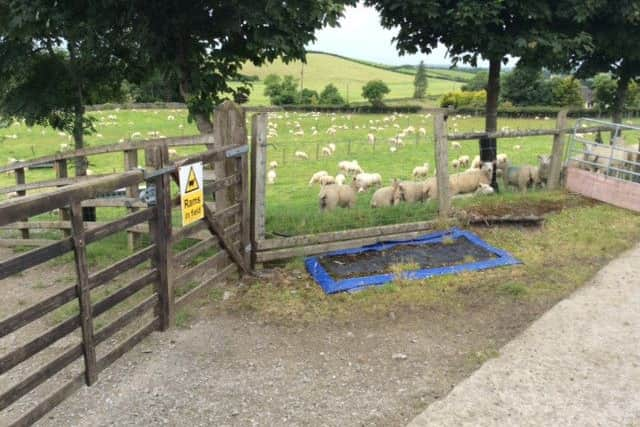Increased growth rates at weaning


This gives adequate time for good growth from grass over the summer months with the plan to sell in August when prices are normally good.
Crosby is pleased that growth rates have increased year on year. This is the plan – to achieve increased growth rates year on year through improved breeding with his own stock and a planned health regime.
Advertisement
Hide AdAdvertisement
Hide AdLambs will now get their second dose of vaccine for protection against pasteurella and clostridial disease as well as a mineral drench. Cull ewes will also be identified.Weather conditions have been such that flies have not presented a nuisance value and a Pour-On for ewes and lambs can be delayed thus enabling the one application to see them through the season.


A mid-season wormer dose will be considered shortly. Aurelie Moralis, Veterinary Consultant with Zoetis points out that ideally this mid-season wormer should come from the group four or five categories (orange or purple) and if administered within a month of weaning can help boost lamb growth rates above the seasonal norm.
“Exploiting the full efficacy of these two newest wormer classes, killing worms that have survived previous doses of other wormer groups, will undo selection for resistance from earlier in the season,” she explains.
To encourage uptake of this concept, it has been labelled a Knockout Drench by Zoetis. Aurelie continued: “This involves substituting just one necessary mid-season lamb treatment with a high efficacy group four or five wormer to eliminate resistant worms that may have survived previous treatments and accumulated in the lambs.
Advertisement
Hide AdAdvertisement
Hide Ad“From that point on, this can help achieve higher growth rates and quicker finish. For optimum financial impact, this treatment is best not left too late in the grazing season.”


Of two wormers available in the UK suitable for use as a Knockout Drench, Aurelie points out that one is a dual active formulation. “STARTECT® Dual Active contains wormers from two different chemical groups, specifically a group five SI and group three ML. Against the same worm species, each offers a different mode of action, with similar duration, working additively with each other.
“Essentially, the dual-active principle is that if resistant worms survive one active ingredient, most or all of them will be killed by the other. This makes higher efficacy possible than can be achieved by a single active alone, increasing its effect against resistant worms.”
In addition to this and an immediate gain from higher growth rates, Aurelie says there may also be a possible longer term advantage. “Modelling studies indicate that development of resistance to group one, two or three wormers – BZs, LVs and MLs respectively – may be delayed by strategic use of dual actives in this knockout protocol.”
Advertisement
Hide AdAdvertisement
Hide AdSome comments from the other farmers who are participating in #Parasite Watch on Twitter throughout the UK include: “Nematodirus eggs detected in lambs in Stirling, Scotland after the recent warmer weather. Flies will be getting more active as weather improves.”


Another Scottish farmer reports lambs doing well and more away to slaughter than last year.
A Welsh farmer from Gwynedd was informed by the abattoir that they have found fluke damage in the lambs livers – a very useful dialogue between customer and supplier!
Farmers can find further comments from the 15 farmers on Parasite Watch on Twitter (@sheep_farmers) or on Facebook (Sheep Farmers).